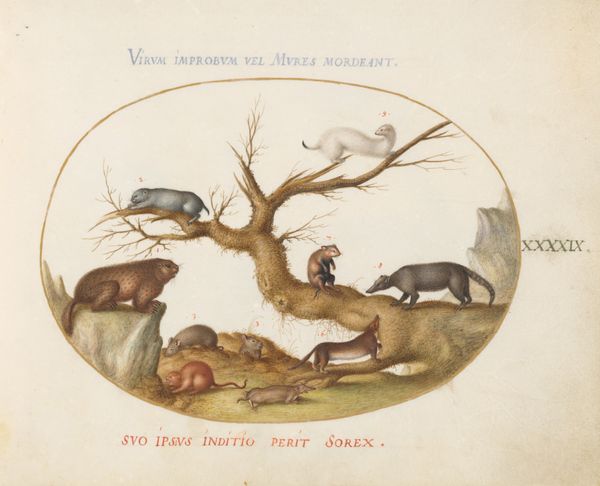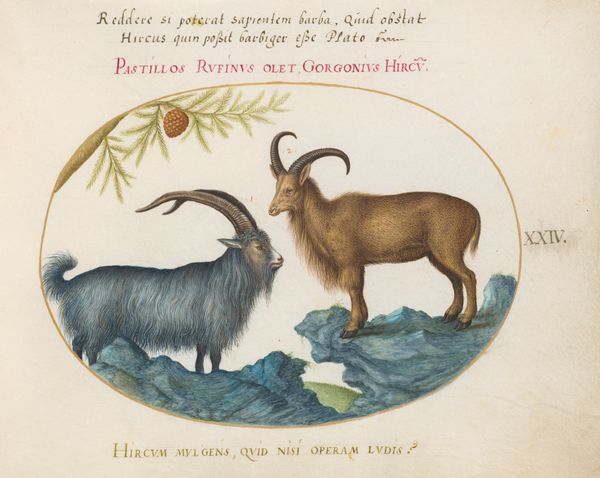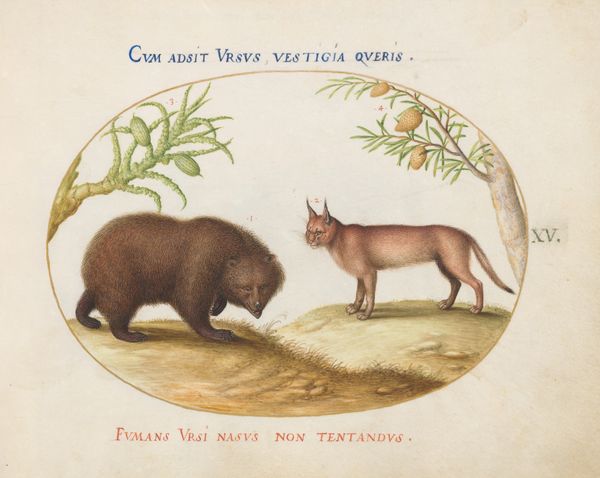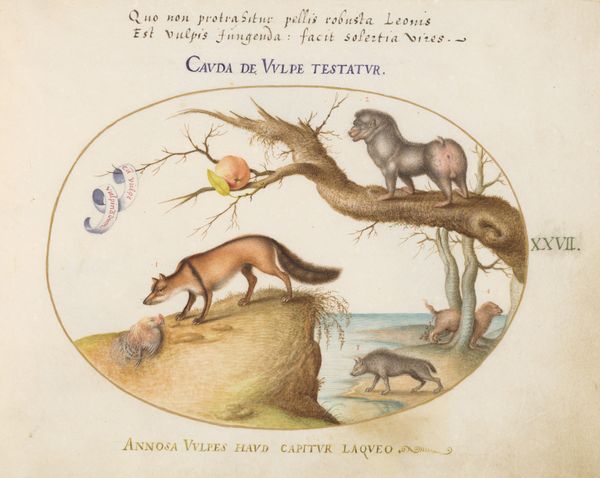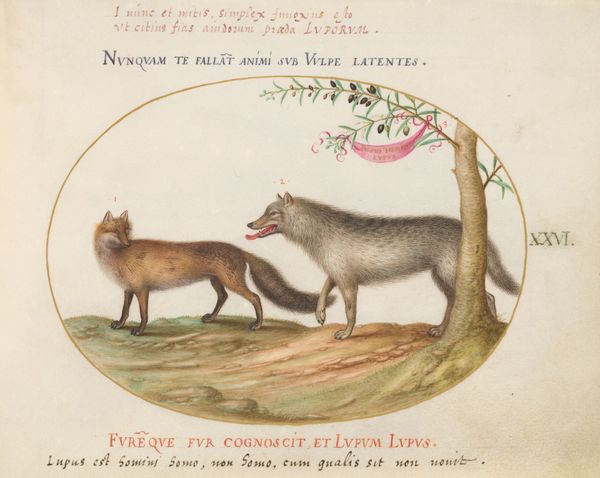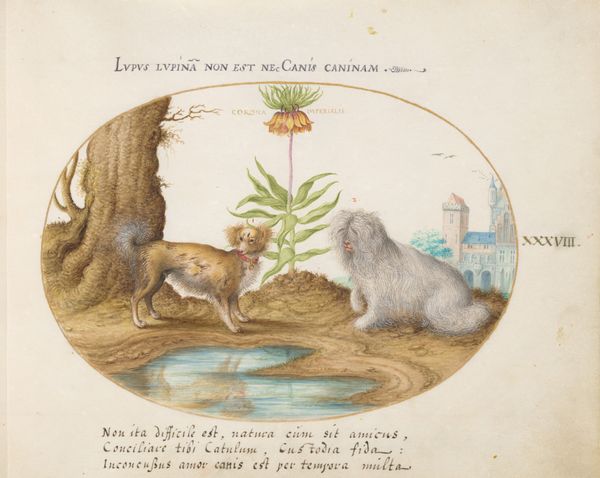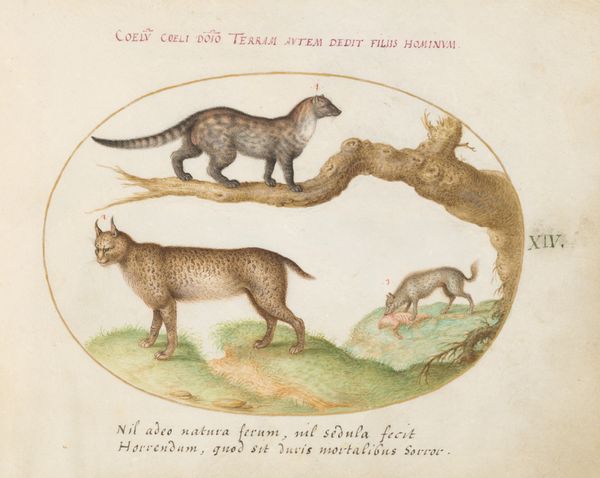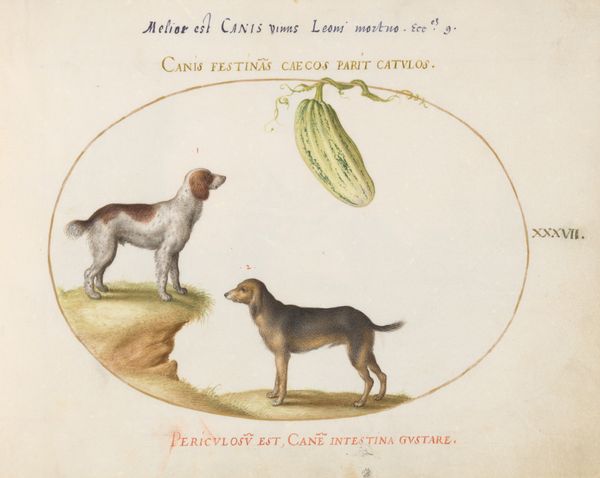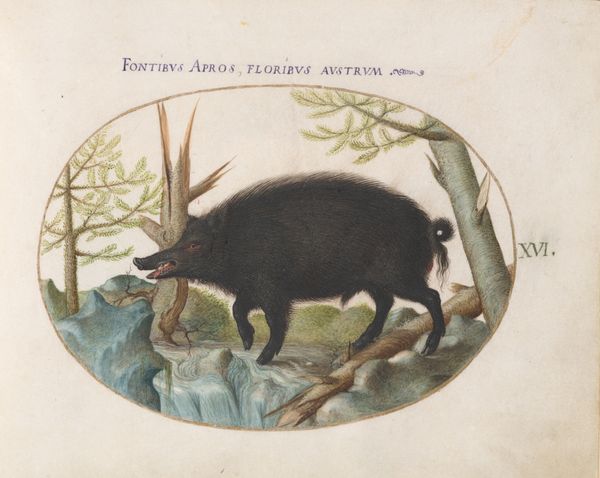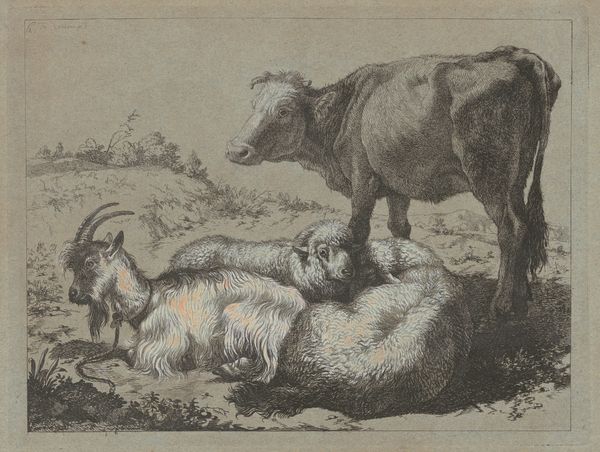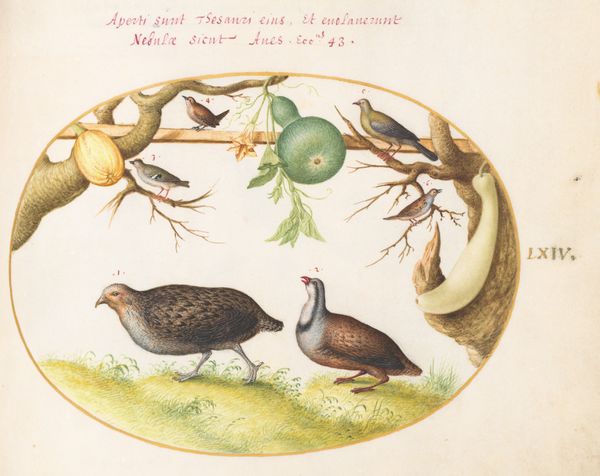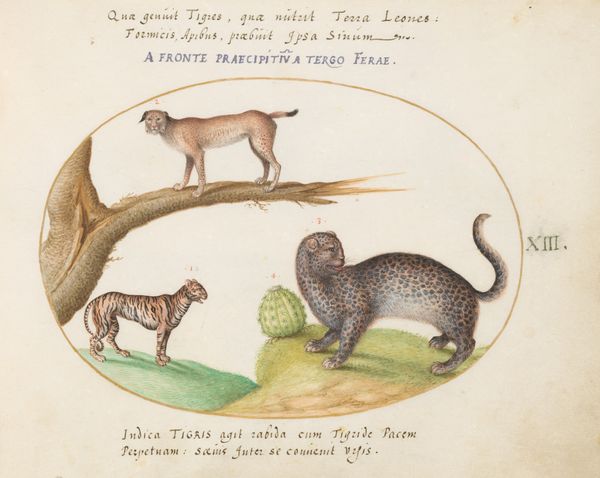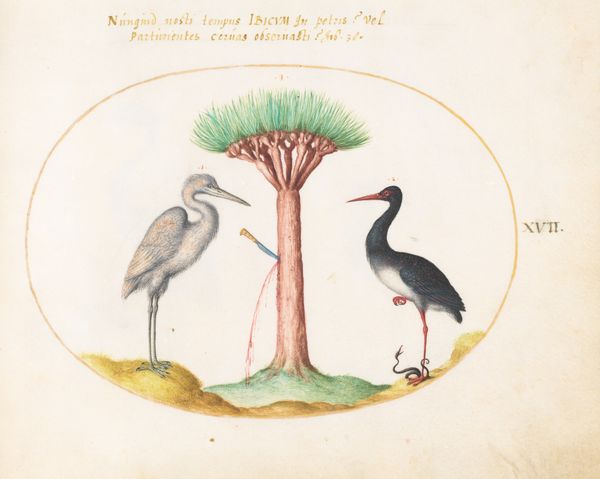
Plate 6: A Variety of Oxen with a Ram and a Water Buffalo(?) by a Plane Tree c. 1575 - 1580
0:00
0:00
drawing, coloured-pencil, watercolor
#
drawing
#
coloured-pencil
#
allegory
#
mannerism
#
watercolor
#
coloured pencil
#
watercolor
Dimensions: page size (approximate): 14.3 x 18.4 cm (5 5/8 x 7 1/4 in.)
Copyright: National Gallery of Art: CC0 1.0
Curator: Joris Hoefnagel's "Plate 6: A Variety of Oxen with a Ram and a Water Buffalo(?) by a Plane Tree," dating from approximately 1575-1580, employs watercolor and colored pencil in a meticulously rendered composition. What are your initial thoughts on this particular plate? Editor: There’s a strange sense of calm despite the somewhat disparate assembly of animals. The pastel palette and the near-perfect symmetry, imposed by the enclosing trees and oval frame, certainly contribute to this serene atmosphere. It feels almost like a fabricated Arcadia. Curator: The artist is clearly interested in contrasting textures and forms. Note the meticulous detail in the rendering of the animals' hides, juxtaposed with the relatively simple rendering of the grassy ground plane and tree trunks. There's an undeniable flatness here, even with the sophisticated shadowing achieved through the layering of watercolors. Editor: Indeed. The flattening effect you mentioned, coupled with the animals' slightly aloof expressions, imbues them with an almost totemic quality. The ram, especially, feels symbolic—a stand-in perhaps for stubbornness or virility, given its historical associations. What do you make of the inscriptions at the top and bottom, translated to 'A horse in a team, an ox at the plough' and 'Not for us such burdens, a beast of burden'? Curator: The text certainly guides an interpretation toward themes of labor and freedom, the role of beasts in human society. The meticulous numbering suggests scientific record-keeping too; each animal a specimen analyzed through its line and color. However, the odd juxtaposition subverts scientific goals, creating a strange effect. Editor: That subversion resonates. It reminds me of the medieval bestiaries, where observation mixed with moralizing tales. Hoefnagel’s menagerie hints at similar allegorical intentions, complicating any simple naturalistic reading. The framing of the composition, too, suggests artifice. Curator: Yes, the overall design emphasizes symbolic relationships, hinting towards allegorical intent that supersedes natural observation, or perhaps synthesizes them, through aesthetic artifice, toward a more complex understanding of both. The balance and visual clarity of the artwork gives way to symbolic interpretations and readings. Editor: An apt description, the visual language employed provides so much meaning to be extrapolated! It underscores how much visual communication hinges on inherited systems of understanding.
Comments
No comments
Be the first to comment and join the conversation on the ultimate creative platform.
